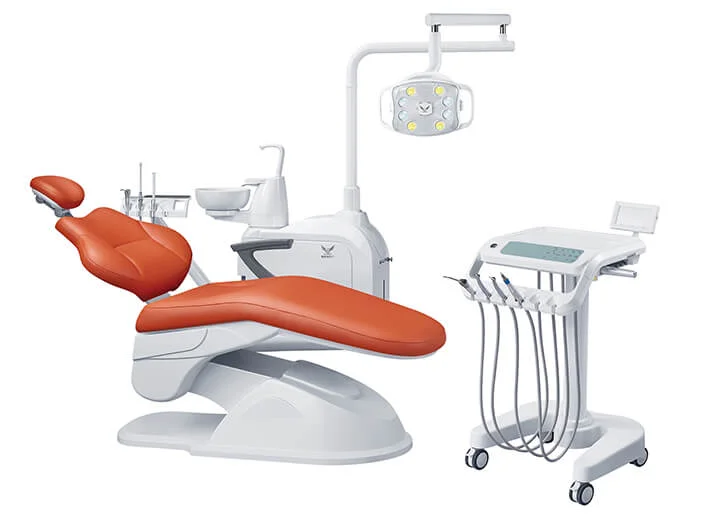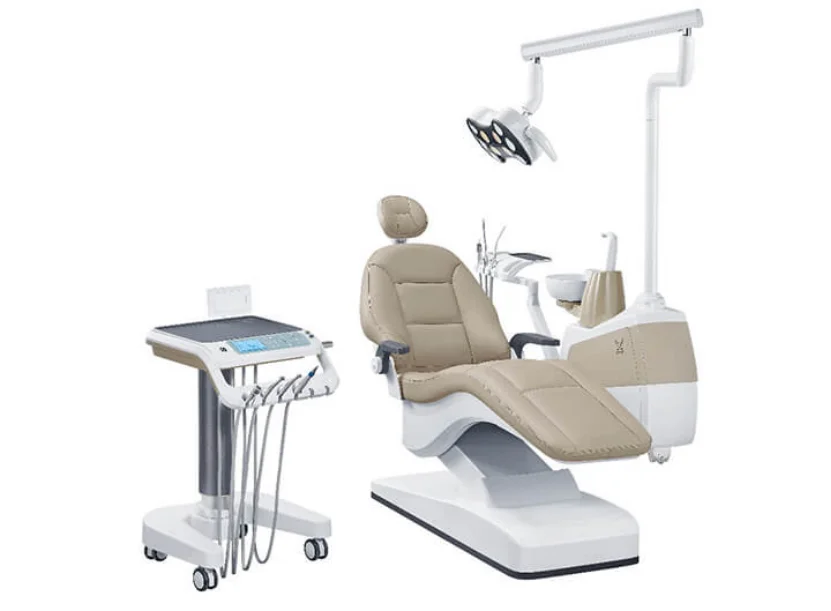Electric dental chairs come with sophisticated features. They enhance patient comfort and dentist efficiency. These chairs often include programmable settings. Dentists can save specific positions for various procedures. They also feature ergonomic designs. These support patients during long treatments. Integrated controls adjust height, tilt, and reclining positions. This allows precise customization.
Electric dental chairs use motors. These are powered by electricity. They adjust the chair’s components. A control panel or foot pedal controls movements. Operators can raise or lower the chair. They can also tilt the backrest. Electric motors ensure smooth transitions. This is useful for procedures needing frequent changes.
Electric dental chairs offer several benefits:
Ease of Use: Automated controls allow quick adjustments. They require minimal effort.
Enhanced Precision: Programmable settings provide exact positioning. They suit specific procedures.
Modern Aesthetic: Sleek designs complement high-tech dental clinics.
Electric dental chairs have drawbacks:
Higher Initial Cost: They are pricier than hydraulic models.
Maintenance Complexity: Electrical components need specialized repairs.
Dependence on Electricity: Power outages can render them non-functional. A backup power source is needed.
Hydraulic dental chairs are known for durability. They are highly reliable. They use a hydraulic system. Fluid pressure controls movements. These chairs feature sturdy construction. They support heavier weights than electric models. Manual adjustment options are included. These suit scenarios needing less precision.
Hydraulic dental chairs rely on a hydraulic pump system. A foot pedal or lever applies pressure. Hydraulic fluid moves through the system. This adjusts the chair’s position. The mechanism ensures smooth, stable movements. It does not depend on electricity.
Hydraulic dental chairs provide distinct benefits:
Cost Efficiency: They are more affordable than electric models.
Reliability: Mechanical systems resist technical failures.
Independence from Electricity: They function without power. This suits areas with unreliable electricity.
Durability: They are built to last. They need minimal maintenance.
Patient Comfort: Smooth movements avoid sudden jerks. This reduces patient discomfort.
Foshan Gladent Medical Instrument Co., Ltd., a trusted dental chair supplier, offers customization for hydraulic dental chairs. These meet specific clinic needs.

Electric dental chairs use motorized systems. They are powered by electricity. They offer advanced programmability. Hydraulic models use fluid pressure mechanisms. They focus on reliability and simplicity.
Electric models need regular maintenance. Their electrical components are complex. This can be costly. Hydraulic chairs require less servicing. Their mechanical design is simpler.
Hydraulic dental chairs are budget-friendly. Electric models cost more due to advanced features. Many practices prefer hydraulic options. They offer cost-effectiveness.
High-tech clinics prioritize patient comfort. They often choose hydraulic dental chairs. These offer precision and Smooth movements avoid sudden jerks. This reduces patient discomfort. Practices valuing durability opt for hydraulic dental chairs. They ensure cost-efficiency.
Patient comfort is a priority. A well-designed dental patient chair enhances the experience. This is vital for long procedures. Ergonomic cushioning, adjustable headrests, and arm supports reduce discomfort. Smooth reclining mechanisms make patients feel secure. They promote relaxation during treatment.
Upholstery material affects comfort. High-quality, durable materials are easy to clean. They improve hygiene. They provide a soft surface. Noise during adjustments impacts patient ease. Quieter mechanisms are preferred.
Operational efficiency matters for dentists. A dental patient chair should allow easy patient access. It should prevent strain. Adjustable heights and tilting options support proper posture. Integrated control panels enable quick adjustments. This saves time during procedures.
Storage compartments are useful. Attachments for tools and instruments minimize interruptions. They keep everything within reach. Programmable settings streamline workflows. They reduce manual adjustments.
Budget influences dental chair choices. View the purchase as a long-term investment. High-end models have higher upfront costs. Their durability and features lower maintenance expenses. Hydraulic dental chairs are robust. They offer great value.
Consider warranty terms and after-sales support. Reliable dental chair suppliers like Foshan Gladent Medical Instrument Co., Ltd. provide tailored solutions. They meet specific clinic needs.

Hydraulic technology is advancing. It offers better performance and reliability. Modern hydraulic systems use advanced fluid mechanics. They deliver smooth, stable movements. This ensures precision without abrupt changes. They are ideal for areas with inconsistent electricity. Hydraulic chairs do not need power.
Noiseless pumps are a key improvement. They create a quieter clinical environment. Energy-efficient components reduce costs. They maintain high performance.
Electric dental chairs are evolving. They improve functionality and aesthetics. Intuitive controls include touchscreens or wireless options. These ensure seamless operation. Enhanced programmability saves multiple position settings. They suit various treatments.
Smart technologies are emerging. Sensors adjust chair positions automatically. They account for patient weight or posture. These innovations increase convenience. They come at a higher cost compared to hydraulic models.
Electric models use motorized systems. They are powered by electricity. Hydraulic versions use fluid pressure mechanisms.
Yes. They offer durability and cost-efficiency. They provide essential functionalities for most practices.
Electric dental chairs need more maintenance. Their electrical components are complex. Hydraulic models have simpler designs.
Yes. Hydraulic systems do not rely on electricity. They function during power outages.
Consider your clinic’s budget. Evaluate patient needs. Assess maintenance capacity. Weigh reliance on advanced features.
For more details on high-quality dental patient chair options, contact Foshan Gladent Medical Instrument Co., Ltd., a leading dental chair supplier.